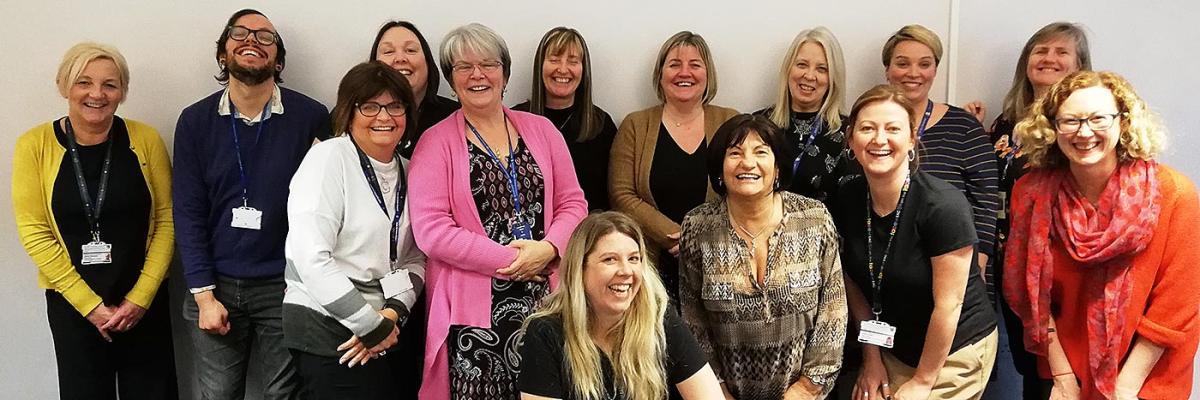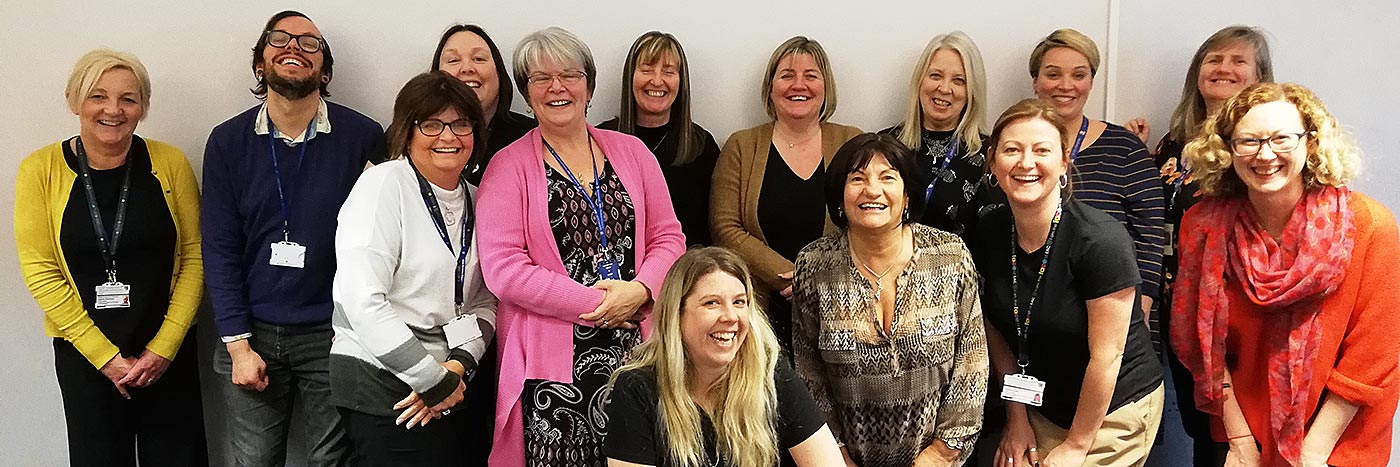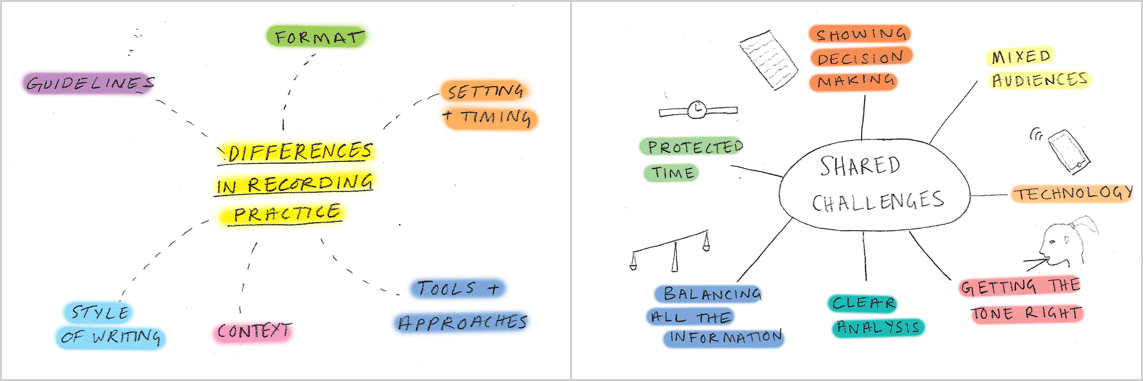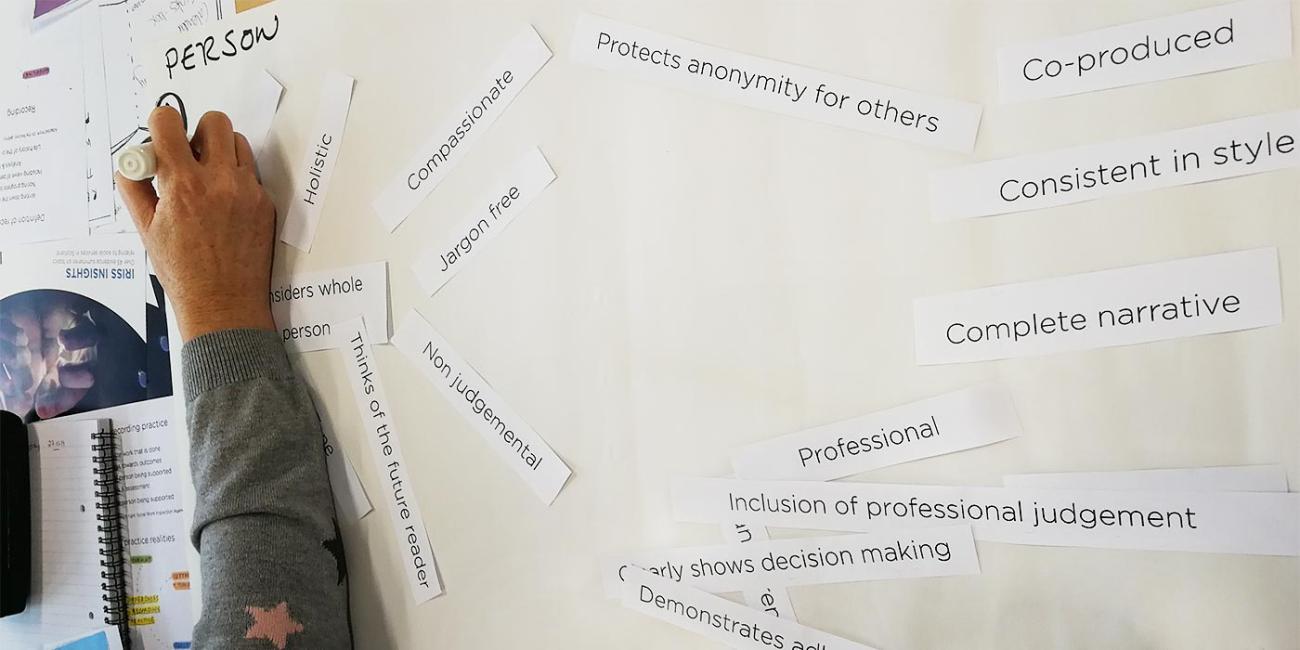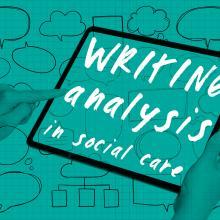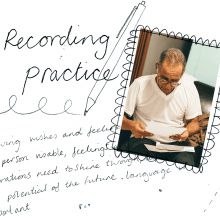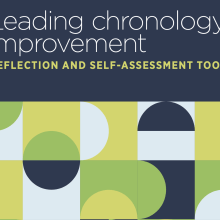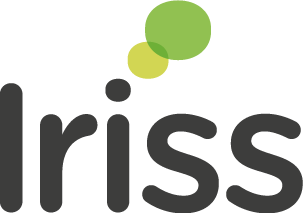Background
This project was established in response to a request from East Ayrshire Social Work to work with Iriss to explore case recording practice and how records can be more inclusive and accessible. In part, this request was informed by the recommendations coming from the Royal Commission into Institutional Responses to Child Sexual Abuse in Australia around accessibility for care leavers to their records. Following a scoping review and initial workshop undertaken in early 2019, we ran a series of three half-day workshops over winter 2019/20 with participation from practitioners across Health & Social Care Partnership (HSCP) services. Uptake and commitment from services was strong throughout the workshops, with an average of 17 practitioners and managers from Social Work, Children’s Homes, Out of Hours, Community Care and Health Visitors taking part.
Project purpose and anticipated outcomes
The purpose of the project was to bring together a mixed-service group of practitioners from the HSCP to share experiences and perspectives on case recording and work collaboratively through cycles of test, reflect, review to explore ideas for improving recording within day to day practice. Project aims and outputs were:
Test and act on ideas to develop recording practice
- East Ayrshire HSCP learns from practitioners’ knowledge, experience and other evidence to inform good practice within the Partnership
- EA HSCP practitioners have an opportunity to learn from colleagues working in other service teams, and have time to reflect on their own practice.
Iriss develops a resource to support practitioners with improving recording practice
The resource will be informed by practitioner knowledge, experiences and learning from the workshops along with our wider research. Through the resource, the learning from East Ayrshire workshops can be accessed by other social services practitioners to support their recording practice.
Overview of approach and methods
The series of three half-day workshops ran in November 2019, January and February 2020. These were underpinned by a ‘test, reflect, review’ approach in which practitioners would identify small tests of change for their own recording practice, with potential to expand this to their teams, for the time periods in between the first and second, then second and third workshops. Iriss also met with a senior manager group after each workshop to update and reflect on emergent learning.
Workshop One framed the context and purpose of the project, exploring with the group a working definition for what recording practice involves. We started to frame the personal element of recording along with surfacing perspectives from the group around assumptions, assets and challenges related to the multiple contexts, purposes and audiences that recordings are produced in, and for. Participants identified elements of practice that they wanted to test out doing differently for the first iteration of the test, reflect, review process.
Workshop Two focused on sharing and reviewing the first cycle of testing. Individually and in small groups, participants reflected on; what happened; how they think it went and if any difference had been made; what resources supported this change (e.g people, systems, culture, other); and what still needed to change. We drew out these individual observations at a whole-group level. Building on the first cycle of testing participants then planned for the second round, whether that was to continue testing the same idea with or without small tweaks, expand to involve other team members, or try out something else.
Workshop Three used the second round of ideas testing as a platform for bringing out key messages in the main thematic areas that participants had been exploring. These were: person-centred style and tone; using less jargon; balancing information and decision making and analysis. We also looked closely at the recording of decision making before drawing the workshops to a close by identifying core principles for a ‘gold standard’ of recording from a multi-agency perspective.
Setting the context
Defining recording practice and the scope of the workshops
Linking back to the scoping workshop earlier in 2019, we continued to use the following working definition of recording practice:
- Writing down the work that is done
- Noting progress towards outcomes
- Including views of person being supported
- Analysis and assessment
- Life history of the person being supported
Adapted from: On the Record — getting it right, Social Work Inspection Agency, 2010
The group discussed this and agreed that as an overarching definition, it covered the key elements of recording - providing facts and description, linking to outcomes, showing analysis and including the perspective of the person the practitioner was working with (or alternatives in particular cases). We continued to check in over the course of the workshops to see if this definition was still fit for purpose.
In the first workshop discussion, and over the project, it was acknowledged that case recording is a broad field. It is much more than producing case notes alone and recordings are made for different purposes- such as case reviews and Protection meetings- as well as in different practice settings. In a multi-agency HSCP, practitioners from different services will be working with their specific professional requirements, using role-specific tools and templates and often using different electronic systems.
Shared challenges and recording for multiple audiences
We embedded the workshops in recognising these common differences as well as the shared challenges that practitioners encounter in recording.
From these themes we explored writing for mixed audiences in more depth. Small groups identified priorities when recording in order to surface these for discussion through the wider group. We framed this by asking people to think about the requirements the following audiences had of a case note: the person or people the case note is about; a practitioner from a different service- accessing and using recordings; the parent/carer of a child; a lawyer; the practitioner (you) writing the recording.
This was helpful in understanding more about how individual practitioners and services approach recording. While there were some small differences in order of priorities between groups, there were overarching similarities:
- Making truthful and accurate records are a top priority
- Other very important elements are: evidencing that work is adhering to legislation; showing kindness; showing clear decisions and professional judgement, and being jargon free
- When considered in conjunction with other elements it was felt that it is less important that the recording process is quick and easy and that notes have a consistent style
Reflections from the group highlighted that it is hard to prioritise core elements of recording as a number of these are of equal importance, and it can be difficult to think about the perspectives of different audiences as ‘you’re programmed to write in a particular way’. Another challenge raised was some services across the HSCP use different systems that don't ‘talk’ to each other, which can lead to duplication of records, however AYRshare was seen as a useful shared system.
Use of jargon and acronyms is a long established challenge in recording, although from the perspectives of those who had been working in the sector for a number of years there was a sense that there is less of this than previously. The key takeaway from our discussions around this was that although case notes need to meet the needs of multiple audiences there could be ways to focus on making what is documented more inclusive and accessible to read and understand.
